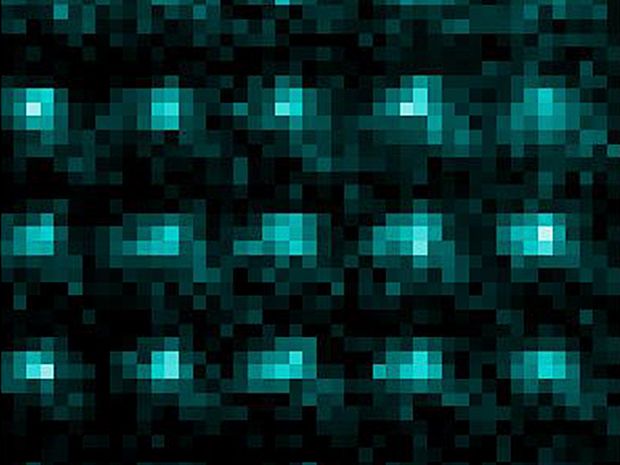Quantum Computing: Atomic Clocks Make for Longer-Lasting Qubits
Cesium atoms and laser traps offer a more robust type of quantum computer
A decade ago, quantum computing was still something of a parlor game. Quantum-computer advocates could make bold claims about one promising technology or another because no one had yet figured out how to string together more than a handful of quantum bits (qubits).
Times have changed. IBM now has a 50-qubit machine, Intel is at 49 qubits, and Google has developed a 72-qubit device. And in September, Pennsylvania State University researchers announced they’d built the framework for a 125-qubit compute engine.
However, unlike the more mature devices from IBM, Intel, and Google, the foundational element for the proof-of-concept Penn State system is not the computer chip but rather the atomic clock.
The neutral-atom quantum computer, proposed by the Penn State group and other researchers around the world, uses a cesium atom in a laser trap (the gold standard of precision timekeeping) as the quantum bit on which the compute engine is based.
“There’s no quantum-mechanical system we understand better than an atom,” says David Weiss, a professor of physics at Penn State. His group published a paper in Nature announcing that they’d used lasers to suspend and cool 125 cesium atoms in the shape of a cube, with each atom held 5 micrometers from its nearest neighbors. (The qubits can be loaded, cooled, and shielded from interference. But the group hasn’t yet developed the logic gates or error correction necessary to make it run.)
Atomic clocks use a well-studied characteristic of these ultracooled and stabilized atoms as the basis for a tick to mark the passage of time. Called the hyperfine split, it involves the spin of each atom’s outermost electron. (One second is universally defined today as 9,192,631,770 periods of the radiation given off from the hyperfine split in cesium.)
For a quantum computer, the idea is to use the same set of cesium quantum states used by an atomic clock. But the cesium atoms, as part of a quantum computer, rely on a quantum property not used in the atomic clock. Like all qubits, those in the cesium-atom quantum computer can occupy one hyperfine state (call it 0) or a slightly higher energy state (call it 1) or, at the core of quantum computing, an in-between state that’s a little bit 0 and a little bit 1, called quantum superposition.
To perform quantum computations using an array of atoms, the atoms must be entangled. To achieve this, Weiss explains, lasers carefully kick an individual atom inside the 125-qubit 3D array into a highly excited electronic state and then cool it back down. The entire system is so sensitive, he says, that cesium atoms near the target atom sense its excitation and de-excitation, which is enough to entangle at least a portion of the atoms in the array.
Mark Saffman, a physics professor at the University of Wisconsin–Madison, says his group’s 2D arrays of trapped cesium atoms can maintain their delicate quantum states for 10 seconds or more (Saffman notes that this figure comes from Weiss’s research team). By contrast, a typical operation (say, multiplying one set of qubits by another) might take a microsecond or less. So the potential is inherent in the system, Saffman says, to run many operations before its quantum states collapse due to noise. “By exciting these atomic qubits to highly excited states using laser beams, we can turn on, at will, very strong interactions,” he says.
There are still trade-offs that make neutral-atom quantum computing a challenge, says William Phillips, a physics professor at the University of Maryland and cowinner of the 1997 Nobel Prize in Physics for his work on laser atom traps.
“The lack of long-range, strong Coulomb interactions means that it is easier to put lots of atoms into a small volume, but it also means that it is harder to manipulate the atoms—that is, to perform quantum gates rapidly,” Phillips says.
Yet, says Dana Anderson, CEO of Boulder, Colo.–based ColdQuanta, now that individual atoms can be reliably stabilized and cooled to below 100 nanokelvins, much of the fundamental science is in place. Anderson says ColdQuanta is working to realize Saffman and Weiss’s vision of neutral atoms as the basis for quantum computers or simulators.
“Once you can get atoms down that cold, we have line of sight to a lot of quantum technologies,” Anderson says. “Whether we’re doing a quantum clock or quantum computing, it’s the same stuff that goes inside.”
Weiss says his 3D array could possibly scale up to 1,728 qubits, arranged in 12 columns and rows, with current technology. However, little could be done with so many qubits until his group and others develop stronger error-correction measures.
And whether Weiss’s 3D arrays or the 2D arrays preferred by Saffman and ColdQuanta are more feasible in the long term remains an open question. For now, “I recognize these problems to be solvable,” Anderson says. “It’s very much an engineering challenge.”
This article appears in the December 2018 print issue as “Atomic Clocks Inspire New Qubits.”
Margo Anderson is senior associate editor and telecommunications editor at IEEE Spectrum. She has a bachelor’s degree in physics and a master’s degree in astrophysics.
